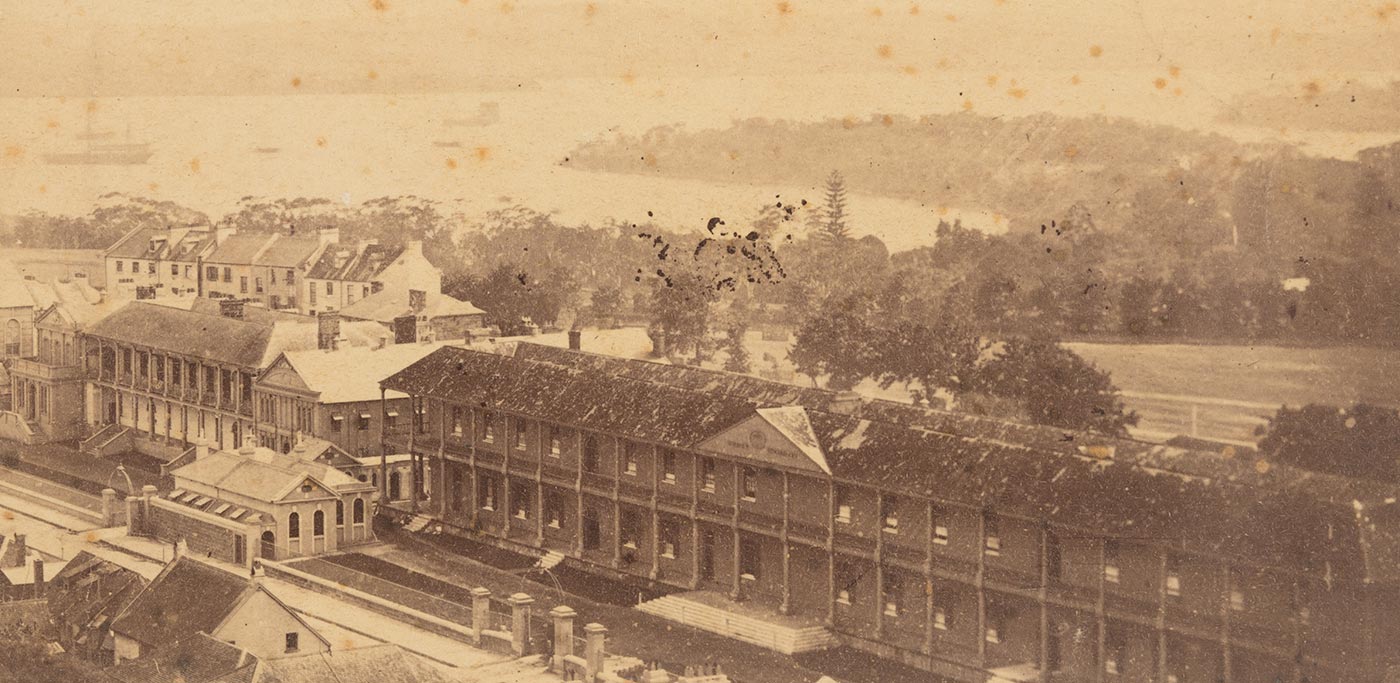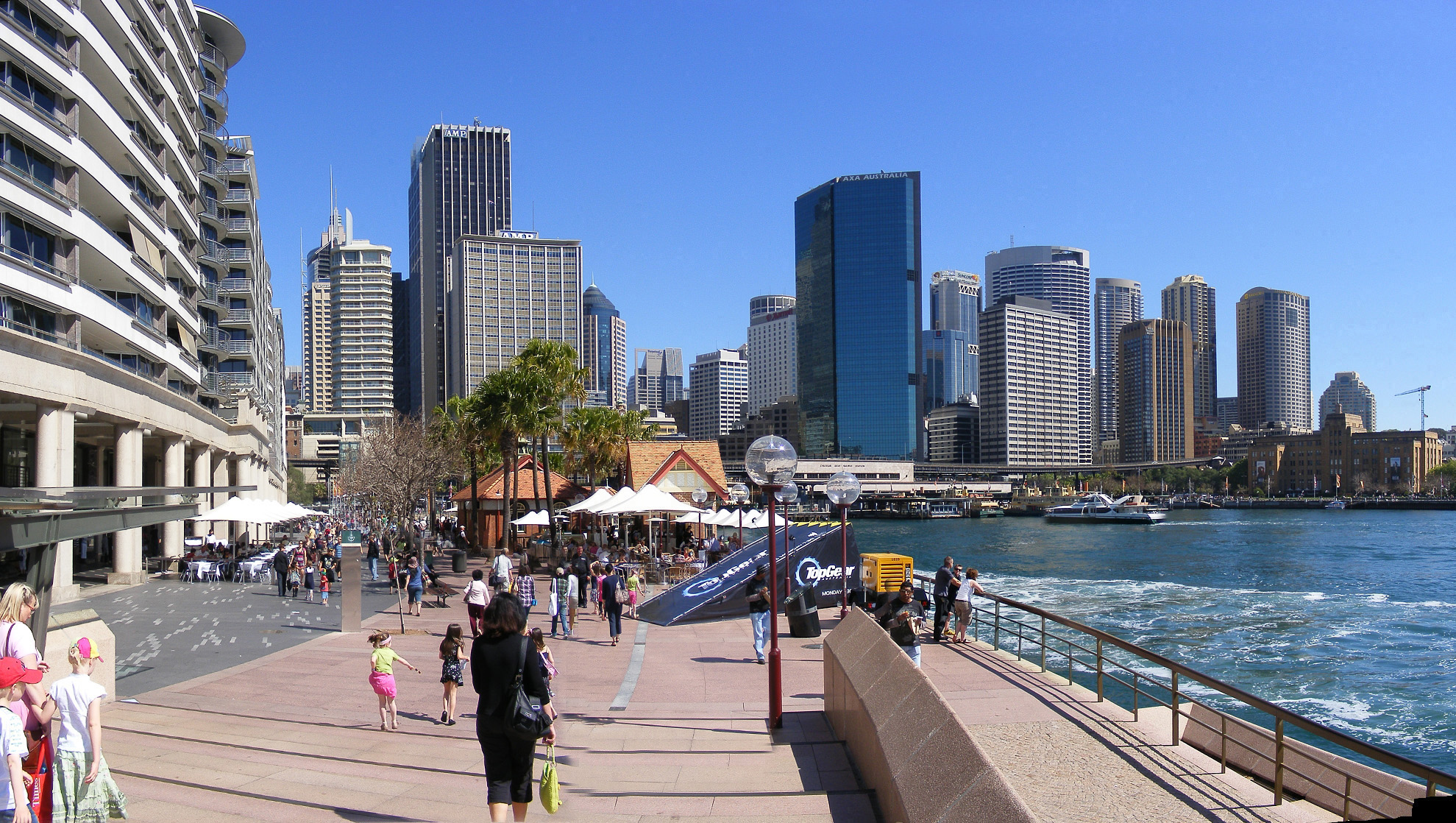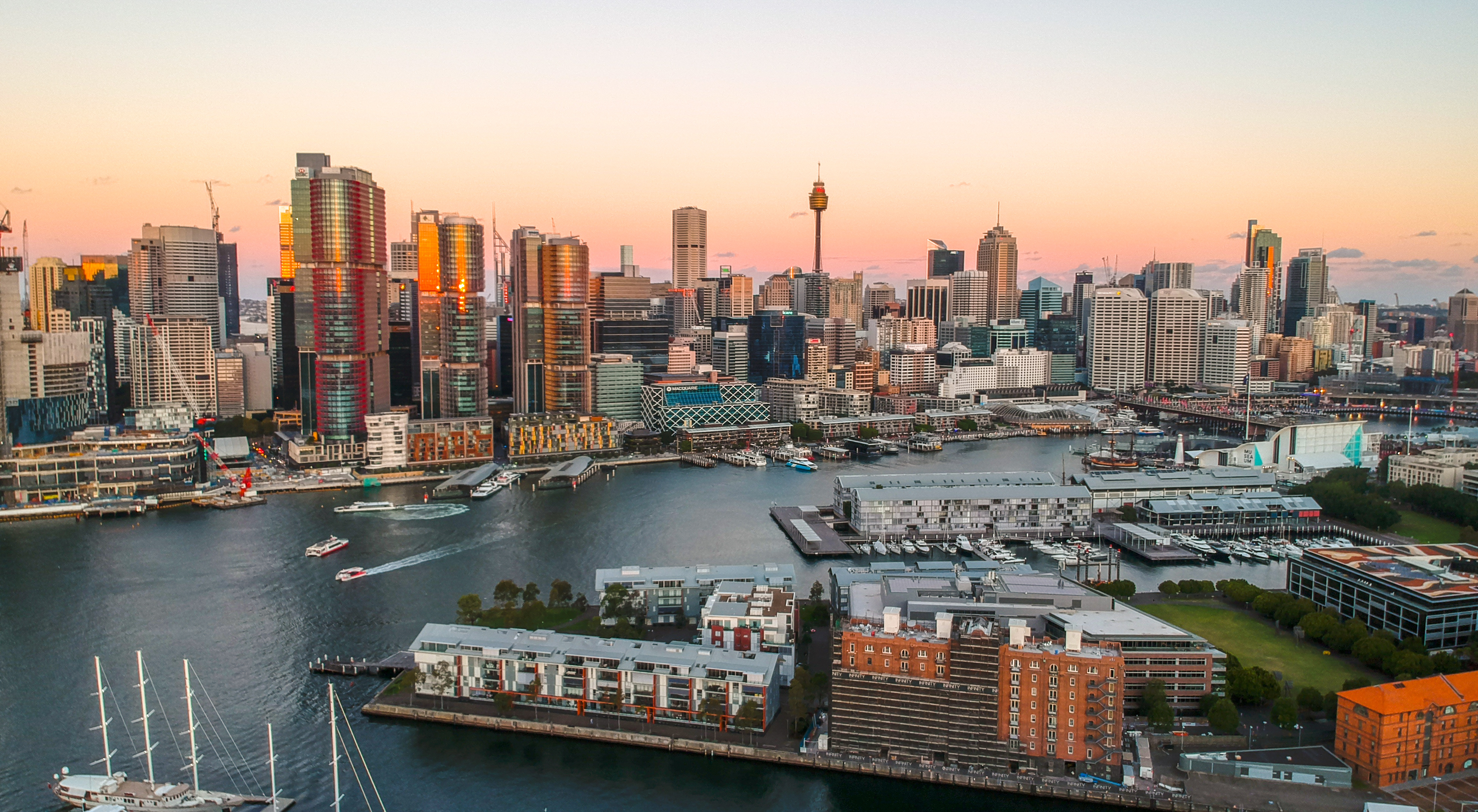|
Lucas Watermills Archaeological Sites
The Lucas Watermills Archaeological Sites are two heritage-listed archaeological sites in Sydney, New South Wales, Australia. The sites comprise the remnants of two convict-era watermills, the Brisbane Mill on the Williams Creek at Creekwood Reserve, Voyager Point, New South Wales, Voyager Point and the Woronora Mill on the Woronora River at Barden Ridge, New South Wales, Barden Ridge. The original watermills were designed by John Lucas and built from 1822 to 1825 by assigned convict labour. The sites were added to the New South Wales State Heritage Register on 30 August 2017. History Early milling in New South Wales In the first years of the colony of New South Wales, food production was problematic. The colonists relied on traditional European farming methods and crops which were not always suited to the Australian climate and conditions. While the production of wheat was restricted by climate, soil fertility and plant diseases, the conversion of grain to flour was largely ... [...More Info...] [...Related Items...] OR: [Wikipedia] [Google] [Baidu] |
Voyager Point, New South Wales
Voyager Point is a small suburb, in South Western Sydney in the state of New South Wales, Australia. Voyager Point is located 25 kilometres (35 min) south of the Sydney central business district, in the local government area of the City of Liverpool. The only adjacent suburbs are Sandy Point, Holsworthy and Pleasure Point. Milperra, Panania and East Hills are located on the opposite bank of the Georges River. In the , Voyager Point recorded a population of 1668 people. History Voyager Point takes its name from the commemorative park which was established following the loss of HMAS ''Voyager'' with the loss of 82 lives after the destroyer collided with the aircraft carrier HMAS ''Melbourne'' in February 1964. This area was formerly the East Hills Naval Estate, which contained about 70 married quarters for families of members in the Royal Australian Navy. This suburb also housed refugees from 1954 many of whom who had fled concentration and refugee camps in Australia. ... [...More Info...] [...Related Items...] OR: [Wikipedia] [Google] [Baidu] |
Nathaniel Lucas
Nathaniel Lucas (1764–1818) was a convict transported to Australia on the First Fleet. His occupation was listed as carpenter. Life Lucas was born in Leatherhead, Surrey, England, to parents John Lucas & Mary Bradford in 1764. Lucas was tried at the Old Bailey, London on 7 July 1784 for feloniously stealing clothing with a value of 40 shillings. Lucas was sentenced to transportation for seven years and left England on the ''Scarborough'' in May 1787.He left behind a wife in England when transported to Australia who was illiterate based on her signing an 'X' in place of her name on a marriage certificate located. Norfolk Island After the First Fleet arrived at Port Jackson in January 1788, Phillip ordered Lieutenant Philip Gidley King to lead a party of fifteen convicts (9 men and 6 women) and seven free men to take control of Norfolk Island and prepare for its commercial development. Lucas was aboard , which arrived at Norfolk on 6 March 1788. On board ''Supply'' Natha ... [...More Info...] [...Related Items...] OR: [Wikipedia] [Google] [Baidu] |
George Street, Sydney
George Street is a street in the central business district of Sydney. It was Sydney's original high street, and remains one of the busiest streets in the city centre. It connects a number of the city's most important buildings and precincts. There are more high rise buildings here than on any other street in Australia. Amongst Australia's 100 largest listed companies, more are located here than on any other street. The street begins in the north end of Sydney in The Rocks, near the Sydney Harbour Bridge, and extends to the southern end of the city, near Central Station and Ultimo, where it leads into Railway Square. From here Broadway is the continuation of George Street turning westwards, leading to the western suburbs as Parramatta Road. History The origins of George Street lie in the layout of the Sydney Cove colony. Captain Arthur Phillip placed the convicts and marines on the rocky western slopes of the bay. A track leading from the convicts' encampment in the ... [...More Info...] [...Related Items...] OR: [Wikipedia] [Google] [Baidu] |
Georges River
The Georges River, also known as Tucoerah River, is an intermediate tide-dominated drowned valley estuary, located to the south and west of Sydney, New South Wales ) , nickname = , image_map = New South Wales in Australia.svg , map_caption = Location of New South Wales in AustraliaCoordinates: , subdivision_type = Country , subdivision_name = Australia , established_title = Before federation , es ..., Australia. The river travels for approximately in a north and then easterly direction to its mouth at Botany Bay, about from the Tasman Sea. The Georges River is the main tributary of Botany Bay; with the Cooks River being a secondary tributary. The total catchment area of the river is approximately and the area surrounding the river is managed by various Local government in Australia, local government authorities and Government of New South Wales, NSW Government government agency, agencies. The land adjacent to the Georges River was occupied for many thous ... [...More Info...] [...Related Items...] OR: [Wikipedia] [Google] [Baidu] |
Sydney Hospital
Sydney Hospital is a major hospital in Australia, located on Macquarie Street in the Sydney central business district. It is the oldest hospital in Australia, dating back to 1788, and has been at its current location since 1811. It first received the name Sydney Hospital in 1881. Currently the hospital comprises 113 inpatient beds. There are about 400 staff members. Specialist services attract patients from all over New South Wales. It specialises in ophthalmology and hand surgery and is a referral hospital for patients requiring these services. It also houses a rudimentary 6-bed Emergency Department. Sydney Hospital became a teaching hospital of the University of Sydney in 1909. Sydney Hospital is associated with Sydney Medical School of the University of Sydney through the Discipline of Clinical Ophthalmology and Eye Health and Save Sight Institute. It is also the location of a number of research institutes associated with the University, including the Heart Research Ins ... [...More Info...] [...Related Items...] OR: [Wikipedia] [Google] [Baidu] |
Francis Greenway
Francis Howard Greenway (20 November 1777 – September 1837) was an English-born architect who was transported to Australia as a convict for the crime of forgery. In New South Wales he worked for the Governor, Lachlan Macquarie, as Australia's first government architect. He became widely known and admired for his work displayed in buildings such as St Matthew's Church in Windsor, New South Wales, St James' Church, Sydney and Hyde Park Barracks, Sydney. Life and career Greenway was born in Mangotsfield, Gloucestershire (near the English city of Bristol), the son of Francis Greenway and Ann Webb.Morton Herman,Greenway, Francis (1777–1837), '' Australian Dictionary of Biography'', Volume 1, MUP, 1966, pp 470–473. Retrieved 27 December 2008 Greenway became an architect "of some eminence" in Bristol and Bath. His only remaining building in the United Kingdom is the Clifton Club in Bristol, originally the Clifton Hotel and Assembly Rooms. In 1809 he became bankrupt and in 1 ... [...More Info...] [...Related Items...] OR: [Wikipedia] [Google] [Baidu] |
St Luke's Anglican Church, Liverpool
St Luke's Anglican Church is a heritage-listed Anglican church at Elizabeth Drive, Liverpool, Sydney, New South Wales, Australia. It was designed by Francis Greenway and built from 1818 to 1820. The property is owned by the Anglican Parish of Liverpool and is the oldest still existing Anglican church in Australia. It was added to the New South Wales State Heritage Register on 2 April 1999. History Commissioned by Governor Lachlan Macquarie and designed by Francis Greenway, St Luke's Church was built in 1818–1819 as part of Macquarie's establishment plan for the town of Liverpool. It was the smallest of the three major church designs commissioned by Macquarie from Greenway, the others being St James' Church in Sydney and St Matthew's Anglican Church in . A rectory was built about the same time but was replaced in 1840. The site for Liverpool was marked out by Macquarie in 1810. St Luke's was one of the original public buildings for the town. Its foundation stone was laid ... [...More Info...] [...Related Items...] OR: [Wikipedia] [Google] [Baidu] |
Sydney Cove
Sydney Cove ( Eora: ) is a bay on the southern shore of Sydney Harbour, one of several harbours in Port Jackson, on the coast of Sydney, New South Wales. Sydney Cove is a focal point for community celebrations, due to its central Sydney location between the Sydney Opera House and the Sydney Harbour Bridge. It is also one of the main congregation points for Sydney New Year's Eve. History The Eora name for Sydney Cove was recorded by several early settlers of the First Fleet variously spelt as Warrane, War-ran, Warrang and Wee-rong. The spot is of great significance, as the first meeting place between Eora people and Europeans. Before colonisation of the area, Eora men speared fish from the shoreline, and women line-fished from their ' (canoes). Sydney Cove was named after the British Home Secretary, the 1st Baron Sydney (who was later created 1st Viscount Sydney in 1789). It was the site chosen by Captain Arthur Phillip, RN between 21 and 23 January 1788 for the Brit ... [...More Info...] [...Related Items...] OR: [Wikipedia] [Google] [Baidu] |
Liverpool, New South Wales
Liverpool is a suburb of Greater Western Sydney, in the state of New South Wales, Australia. It is located approximately south-west of the Sydney CBD. Liverpool is the administrative seat of the local government area of the City of Liverpool and is situated in the Cumberland Plain. History Liverpool is one of the oldest urban settlements in Australia, founded on 7 November 1810 as an agricultural centre by Governor Lachlan Macquarie. He named it after Robert Banks Jenkinson, Earl of Liverpool, who was then the Secretary of State for the Colonies and the English city of Liverpool, upon which some of the area's architecture is based. Liverpool is at the head of navigation of the Georges River and combined with the Great Southern Railway from Sydney to Melbourne reaching Liverpool in the late 1850s, Liverpool became a major agricultural and transportation centre as the land in the district was very productive. Until the 1950s, Liverpool was still a satellite town with ... [...More Info...] [...Related Items...] OR: [Wikipedia] [Google] [Baidu] |
Sydney Observatory
The Sydney Observatory is a heritage-listed meteorological station, astronomical observatory, function venue, science museum, and education facility located on Observatory Hill at Upper Fort Street, in the inner city Sydney suburb of Millers Point in the City of Sydney local government area of New South Wales, Australia. It was designed by William Weaver (plans) and Alexander Dawson (supervision) and built from 1857 to 1859 by Charles Bingemann & Ebenezer Dewar. It is also known as The Sydney Observatory; Observatory; Fort Phillip; Windmill Hill; and Flagstaff Hill. It was added to the New South Wales State Heritage Register on 22 December 2000. The site was formerly a defence fort, semaphore station, time ball station, meteorological station, observatory and windmills. The site evolved from a fort built on 'Windmill Hill' in the early 19th century to an observatory during the nineteenth century. It is now a working museum where evening visitors can observe the stars and ... [...More Info...] [...Related Items...] OR: [Wikipedia] [Google] [Baidu] |
The Sydney Gazette And New South Wales Advertiser
''The Sydney Gazette and New South Wales Advertiser'' was the first newspaper printed in Australia, running from 5 March 1803 until 20 October 1842. It was a semi-official publication of the government of New South Wales, authorised by Governor King and printed by George Howe. On 14 October 1824, under the editorship of Robert Howe, it ceased to be censored by the colonial government. Printing press When the eleven vessels of the First Fleet of settlers reached New South Wales in January 1788, among the cargo aboard was a small second-hand printing press intended for printing general orders, regulations and official proclamations in the new penal settlement. Seven years went by before someone was found who could work the press. This was convict George Hughes, who used it to print more than 200 government orders between 1795 and 1799. Australia's first printer also used the press to produce playbills for theatrical performances in Sydney in March and April 1800, and he also ... [...More Info...] [...Related Items...] OR: [Wikipedia] [Google] [Baidu] |
Darling Harbour
Darling Harbour is a harbour adjacent to the city centre of Sydney, New South Wales, Australia that is made up of a large recreational and pedestrian precinct that is situated on western outskirts of the Sydney central business district. Originally named Long Cove, the locality extends northwards from Chinatown, along both sides of Cockle Bay to King Street Wharf on the east, and to the suburb of Pyrmont on the west. Cockle Bay is just one of the waterways that makes up Darling Harbour, which opens north into the much larger Port Jackson. The precinct and its immediate surroundings are administered independently of the local government area of the City of Sydney, by Property NSW. History Darling Harbour is named after Lieutenant-General Ralph Darling, who was Governor of New South Wales from 1825 to 1831. The area was originally known as Long Cove, but was generally referred to as Cockle Bay until 1826 when Governor Darling renamed it after himself. The name Cockle Bay ... [...More Info...] [...Related Items...] OR: [Wikipedia] [Google] [Baidu] |






